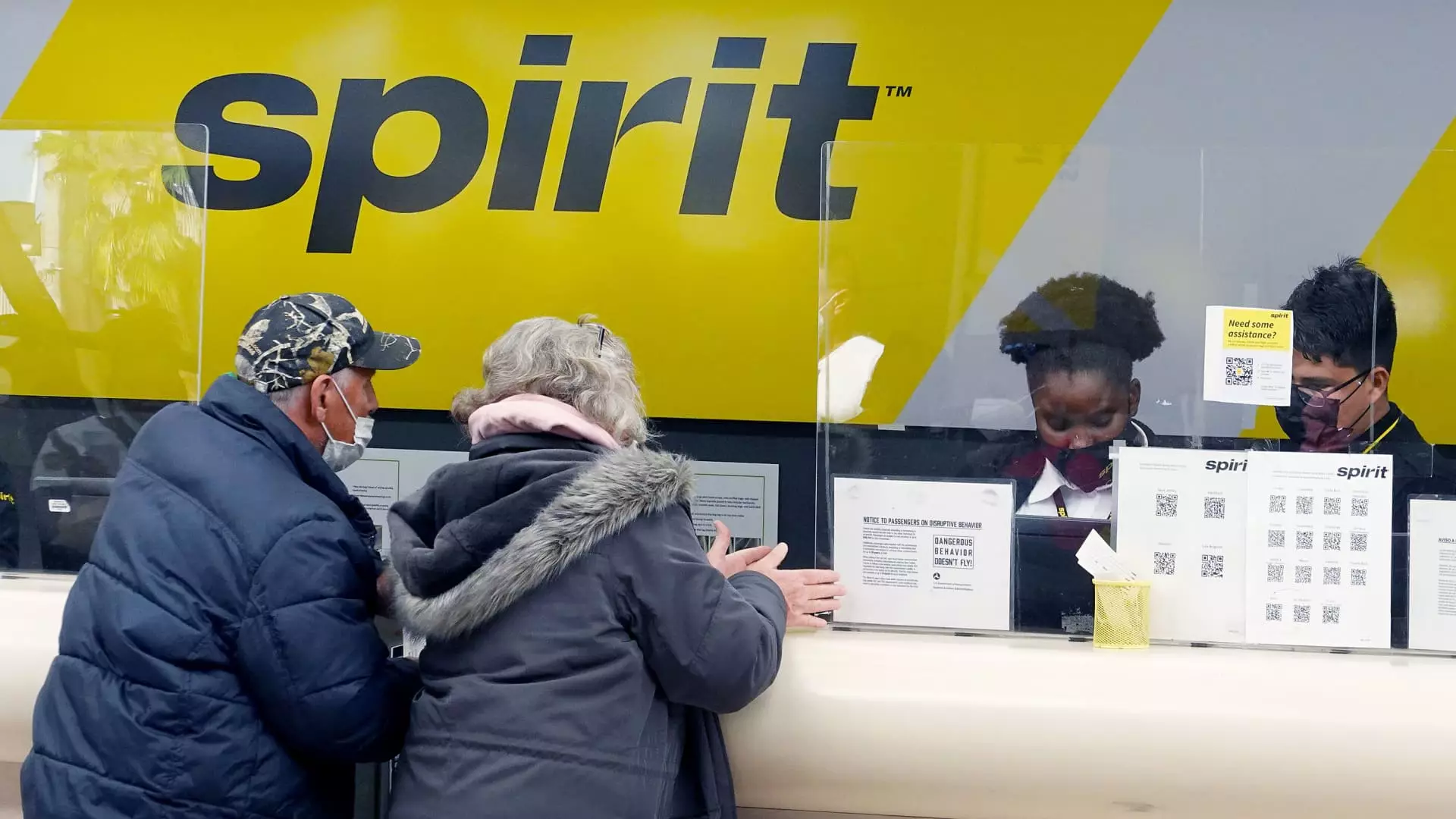Spirit Airlines, known for its no-frills, budget-friendly travel options, has become a significant player in the airline industry in the last few decades. However, the airline has recently encountered severe turbulence, culminating in filing for Chapter 11 bankruptcy protection. This decision follows years of financial struggles, including a substantial engine recall and an unsuccessful attempt to merge with JetBlue Airways, which ended up in court due to antitrust concerns. The dichotomy between its innovative pricing model and the recent economic hardships paints a complex picture of Spirit Airlines.
The roots of Spirit’s low-cost success lie in its aggressive pricing strategy, which has appealed to budget-conscious travelers. By adopting a model that offered low base fares and charged extra for nearly every service beyond the seat itself—such as baggage, seat selection, and onboard refreshments—Spirit carved a niche in a competitive market. Yet, this model faced increased scrutiny post-pandemic as operational costs soared and consumer expectations evolved. Customers began to favor airlines that provided more comprehensive services and amenities, further complicating Spirit’s operational strategy.
The company’s recent bankruptcy filing in the U.S. Bankruptcy Court for the Southern District of New York reflects a dire financial situation. In a prearranged deal with bondholders, Spirit secured $300 million in debtor-in-possession financing to maintain operations during this challenging period. Spirit’s management is optimistic that restructuring will culminate in an exit from bankruptcy by early next year. They have assured customers that normal operations will continue, and there’s no immediate disruption for those holding tickets or loyalty points.
The implications of this bankruptcy are extended beyond just the airline and its customers. The delisting from the New York Stock Exchange signifies a major setback for Spirit, which had higher hopes following its initial public offering. The announcement highlighted that this restructuring would not affect vendors and aircraft lessors, which is crucial for maintaining operational continuity during turbulence.
The airline industry is notoriously volatile, and Spirit is facing unprecedented challenges that have mounted in complexity over the past few years. The airline’s troubles were exacerbated by an engine recall that grounded many of its planes, significantly affecting its operational capacity. When the pandemic hit, it only worsened the financial strain, leading to a staggering loss of over $335 million in the first half of the year. Despite attempts to liquidate assets, including the sale of dozens of jets, Spirit’s financial position remains precarious.
In addition to this, the recent rise in operational costs due to inflation and increased demand for personnel has made it even more challenging for Spirit to sustain its low-fare model. Travelers are now gravitating towards airlines that offer better value, and Spirit’s bare-bones service has started to lose its luster. Although the implementation of bundled fares and enhanced seating options indicated an attempt to adapt, these changes have not sufficiently counteracted spiraling costs or competition from larger carriers offering more attractive packages.
Consumer sentiment towards Spirit airlines is mixed; while many cherish its affordability, others have criticized the added fees and limited services. Rival airlines have also adapted to the shift in consumer preferences by introducing basic economy fares that mirror Spirit’s model but include a few more perks. Consequently, Spirit’s once unique selling proposition is no longer distinct, and its path to recovery demands a substantial rethinking of its business philosophy.
In light of these changes, analysts suggest that Spirit may need to focus on offering more comprehensive and customer-centric services to bounce back from bankruptcy. An ability to innovate its brand and operational model will be vital for Spirit if it aims to regain competitive viability in a post-pandemic landscape where consumer expectations have transformed significantly.
While the immediate future appears uncertain for Spirit Airlines, there are inklings of potential recovery as industry analysts anticipate talks between Spirit and Frontier Airlines could materialize once again, potentially leading to a merger that could alleviate some financial burden. Additionally, with a robust liquidity plan to maintain approximately $1 billion in cash reserves, Spirit has a chance to weather this storm.
Moreover, as the pandemic subsides and travel demand surges, the timing of Spirit’s recovery could align favorably with a wave of travelers eager to explore affordable flight options. However, for Spirit Airlines to reclaim its status as an industry leader, it will require agility, foresight, and perhaps most importantly, a reconceptualization of what productive, low-cost air travel means in an ever-evolving landscape. The journey from bankruptcy could transform Spirit into a more resilient entity or further entrench its struggles if changes are not implemented swiftly and effectively.

